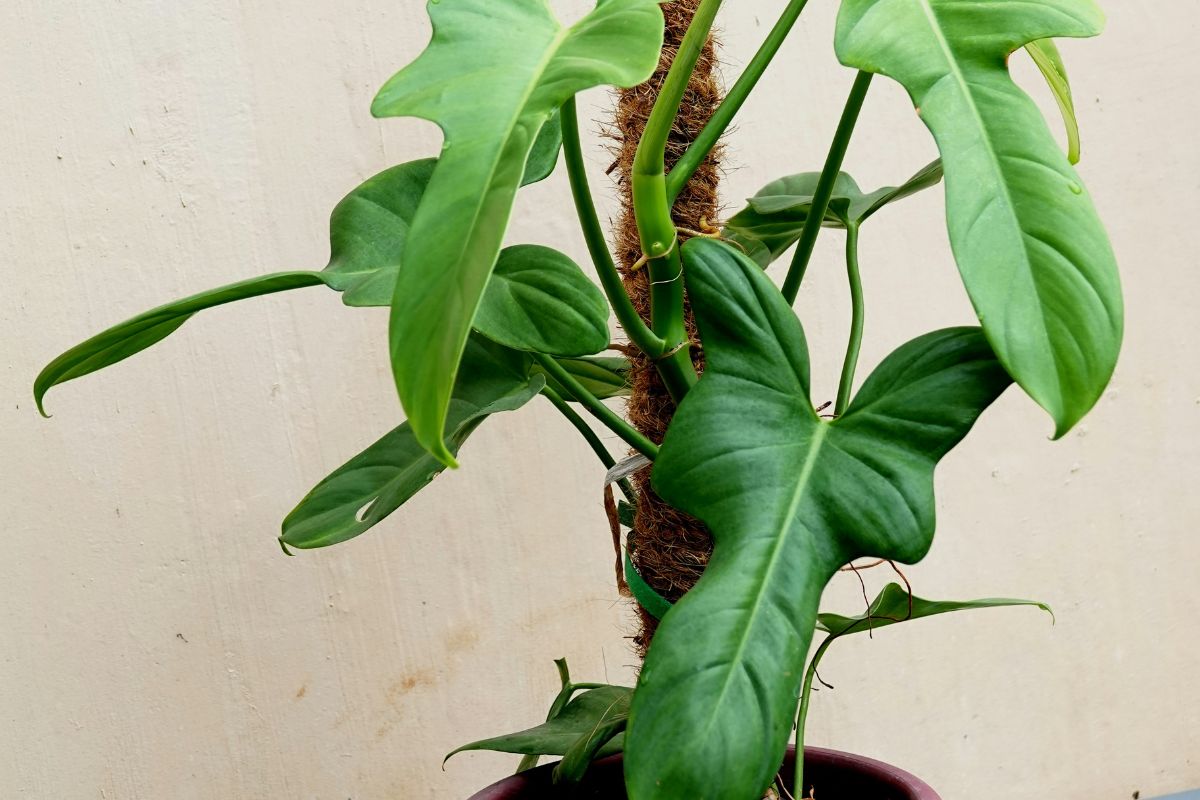Heartleaf Philodendron Benefits and Care Guide
The Heartleaf Philodendron (Philodendron hederaceum) is a classic and beloved houseplant, known for its trailing vines and glossy, heart-shaped leaves. Originating from the tropical rainforests of Central and South America, this adaptable plant is easy to grow and maintain, making it a popular choice among plant enthusiasts. In this guide, we’ll explore the benefits of the Heartleaf Philodendron and provide essential tips for its care.
Benefits of Heartleaf Philodendron

1. Air Purification
The Heartleaf Philodendron is an effective air purifier, removing toxins like formaldehyde, carbon monoxide, and benzene from indoor air. Its air-cleaning properties make it a great addition to homes and offices.
How It Works:
Absorbs pollutants through its leaves and roots.
Improves overall air quality by releasing oxygen.
Tip: Place it in frequently used spaces, such as bedrooms or work areas, for maximum benefit.
2. Stress Relief and Mood Improvement
Caring for plants like the Heartleaf Philodendron can reduce stress and promote relaxation. Its lush, green foliage brings a sense of tranquility and liveliness to indoor spaces.
How It Helps:
Encourages mindfulness through plant care.
Brightens up rooms with its vibrant appearance, fostering a positive atmosphere.
3. Low Maintenance
The Heartleaf Philodendron is one of the easiest houseplants to care for, thriving in various lighting conditions and forgiving occasional neglect.
Why It’s Easy:
Adapts well to low and medium light.
Can tolerate inconsistent watering schedules.
4. Versatile Decor Element
The Heartleaf Philodendron’s trailing vines and compact growth habit make it a versatile plant for decorating. It can be grown in hanging baskets, trained to climb trellises, or placed on shelves and tabletops.
Decor Tips:
Use it as a trailing plant for bookshelves or wall-mounted planters.
Train its vines to climb a moss pole or trellis for a vertical display.
5. Improves Indoor Humidity
Like many tropical plants, the Heartleaf Philodendron increases indoor humidity through transpiration, which benefits the overall environment.
Why Humidity Matters:
Prevents dryness in skin and respiratory passages.
Supports the health of nearby plants.

How to Care for Heartleaf Philodendron
The Heartleaf Philodendron is highly adaptable, but providing the right conditions ensures optimal growth and longevity.
1. Light Requirements
This plant flourishes in bright, indirect light but can adapt to low-light settings. Avoid placing it in direct sunlight, as this can scorch its leaves.
Tips:
Place it near an east- or north-facing window.
Rotate the plant periodically to promote even growth.
2. Watering
The Heartleaf Philodendron prefers slightly moist soil but can handle short periods of drought. Overwatering is one of the few ways this plant can be harmed.
Tips:
Water the plant when the top 1-2 inches of soil are dry to the touch.
Use pots with drainage holes to avoid waterlogging.
3. Soil
A well-draining potting mix is essential for the Heartleaf Philodendron. It prefers soil that holds moisture while avoiding sogginess..
Recommendation:
Use a standard indoor plant mix or create your own blend with potting soil, perlite, and peat moss.
4. Temperature and Humidity
This tropical plant thrives in temperatures between 65-85°F (18-29°C) and enjoys moderate to high humidity.
Tips:
Keep it away from cold drafts and heating vents.
Increase humidity with a pebble tray, or humidifier, or by misting the leaves occasionally.
5. Pruning and Propagation
Regular pruning keeps the plant’s shape tidy and encourages new growth. Propagation is simple and allows you to share this beautiful plant with others.
Pruning Tips:
Remove yellowing or damaged leaves to maintain its health.
Trim leggy vines to promote fuller growth.
Propagation Steps:
Snip a healthy vine just below a node.
Place the cutting in water or moist soil for propagation.
Roots typically develop within 2-4 weeks.
6. Fertilizing
While the Heartleaf Philodendron doesn’t require frequent feeding, occasional fertilization boosts its growth.
Tips:
Apply a balanced liquid fertilizer diluted to half strength once a month during the growing season (spring and summer).
Reduce feeding during fall and winter.
Common Problems and Solutions
Yellow Leaves: Often caused by overwatering. Let the soil dry out before watering again.
Brown Leaf Tips: Usually due to low humidity or underwatering. Raise humidity levels and adjust your watering schedule as needed.
Leggy Growth: Indicates insufficient light. Relocate the plant to a brighter spot.
Pests: Look out for common pests like spider mites and mealybugs. Use insecticidal soap or neem oil to treat infestations.
